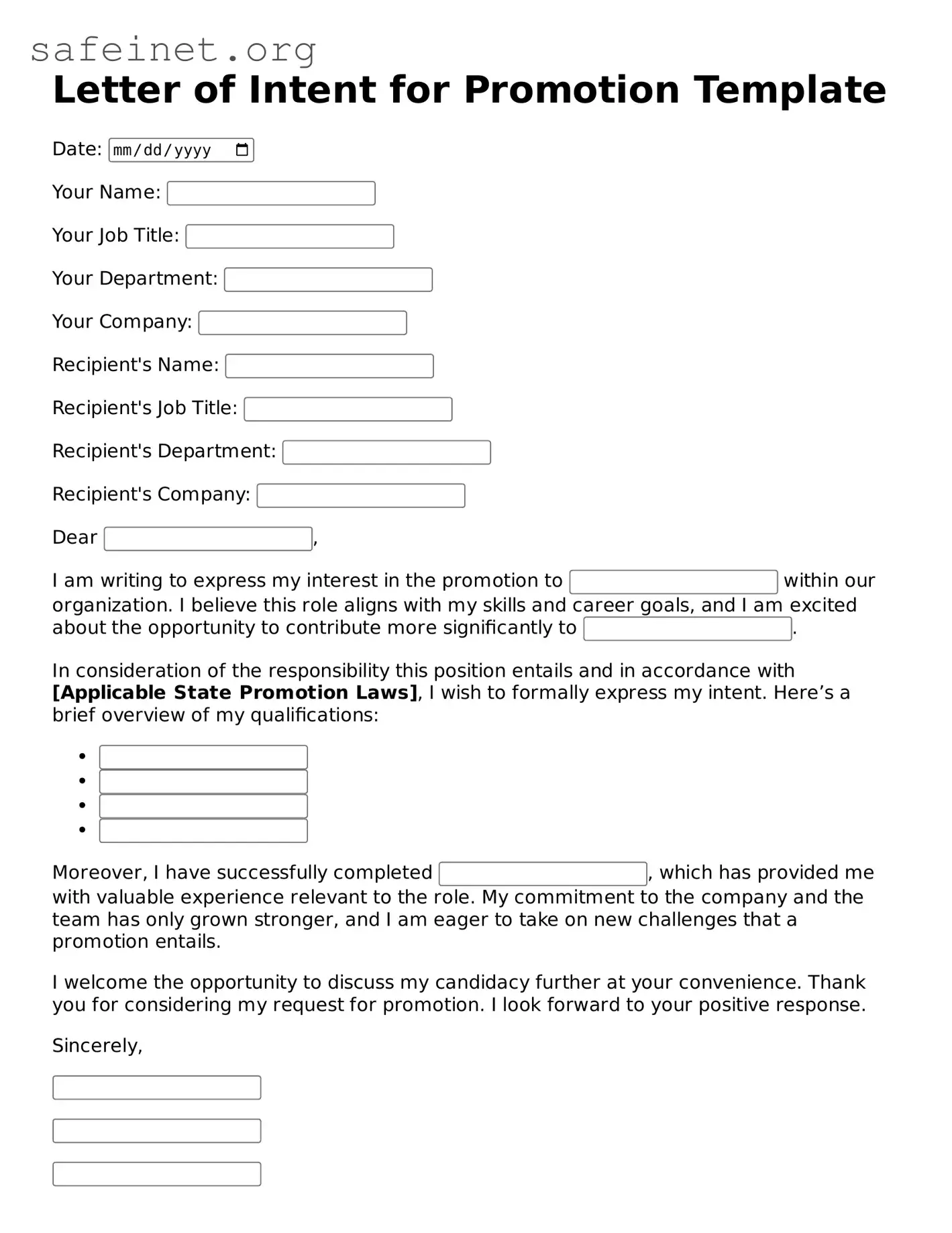The Letter of Intent for Promotion form is similar to a Job Offer Letter. Both documents outline the terms and expectations surrounding a new position or advancement within a company. A Job Offer Letter specifically details the role, compensation, benefits, and start date for the employee, while the Letter of Intent expresses the employee's desire for promotion and may highlight their qualifications and contributions to the organization.
Another document is the Employee Evaluation Form. This form serves as a performance review that assesses an employee's skills, contributions, and potential for growth within the organization. Like the Letter of Intent for Promotion, it may be used to support an employee's application for advancement. Evaluations often include feedback from supervisors, which can bolster an employee's case for promotion.
The Salary Negotiation Letter is similar in that it addresses compensation matters related to promotion. This document can serve as a formal request for a salary increase alongside a promotion. It typically outlines reasons for the requested raise, highlighting the employee's achievements and industry standards, similar to how the Letter of Intent articulates the reasons for seeking a promotion.
The Promotion Notification Letter is closely related as it formally communicates that an employee has been selected for a new position. This letter typically confirms the promotion and provides logistical details about the transition. In contrast, the Letter of Intent acts as a pre-notification, where the employee indicates interest, before a decision has been made.
A Performance Improvement Plan (PIP) can intersect with the Letter of Intent in cases where an employee is looking for a promotion after improving their performance. A PIP outlines specific goals and progress tracking for employees who may need support in reaching their potential. While one focuses on addressing weaknesses, the Letter of Intent emphasizes readiness for advancement.
The Professional Development Plan (PDP) is another document that shares similarities. Much like the Letter of Intent for Promotion, a PDP outlines an employee's career goals and the steps necessary to achieve them. It often includes training, skills enhancement, and milestones that align with promotions within the company. Both documents aim to facilitate growth within the workplace.
The Resume or CV also holds similarities in framing qualifications for advancement. In the context of a promotion, an updated Resume highlights an employee’s achievements and skills, making a case for their readiness for the new position. In both cases, the intention is to present one’s qualifications to supervisors and decision-makers within the company.
Lastly, a Cover Letter can be seen as analogous to the Letter of Intent for Promotion. In job applications, a Cover Letter provides insight into the applicant's motivations and fit for the position. Similarly, the Letter of Intent articulates an employee’s passions and aspirations for a higher role within the same organization. Both documents are crafted with care to make an impact on decision-makers.
